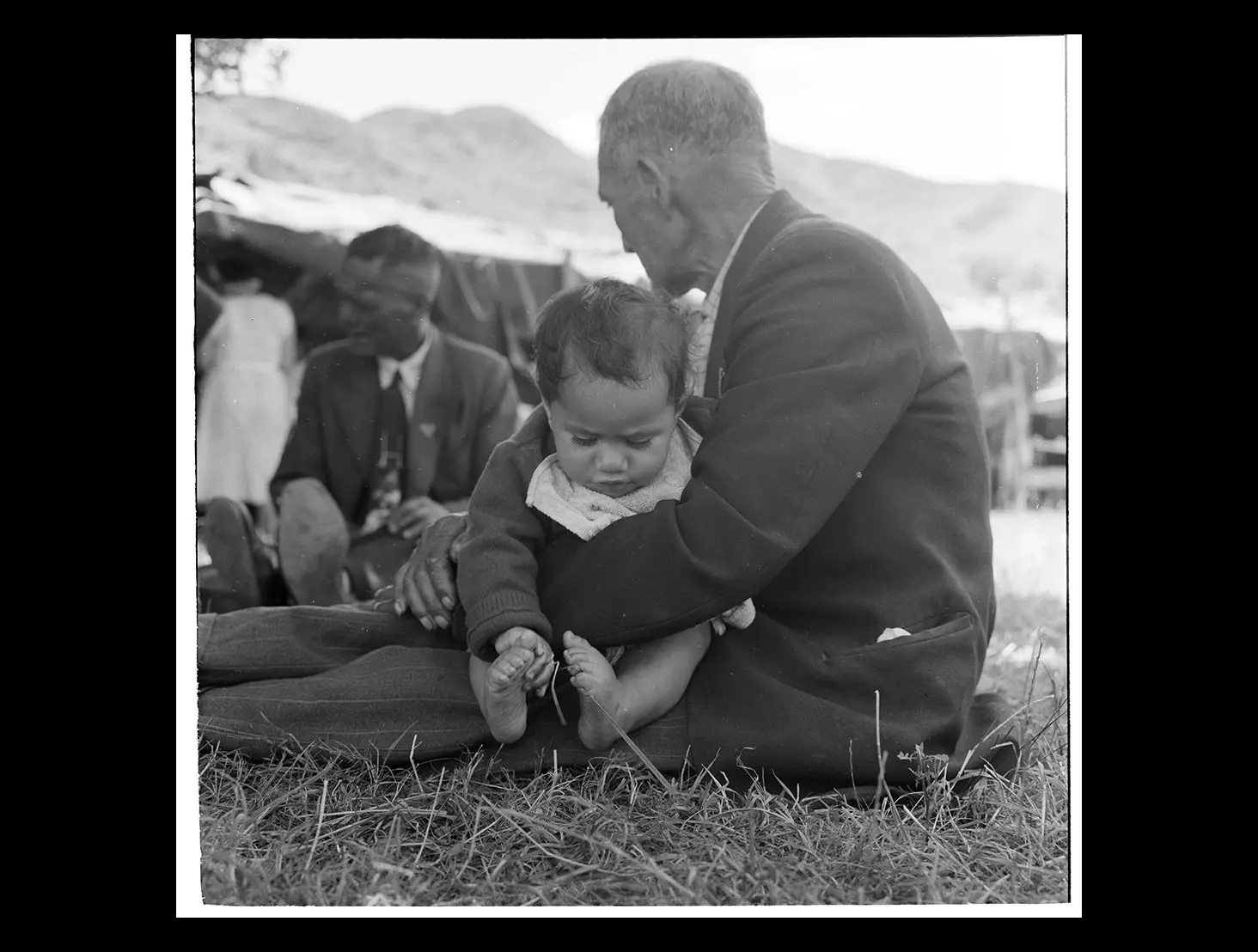Image credit: Koroua and baby, Koriniti, 1961 by Ans Westra Ref: AWM-0070-F_10 Alexander Turnbull Library.

Image credit: Koroua and baby, Koriniti, 1961 by Ans Westra Ref: AWM-0070-F_10 Alexander Turnbull Library.

Social documentary photographer Ans Westra’s images of Māori in Aotearoa New Zealand recorded a time of great social and political change for Māoridom. Find out more, and explore our collections and curated resources.
Away from the crowds and main action, a roving photographer with a keen eye for a special human moment crouches low to take a surreptitious photo of a koroua sitting in the shade, chatting to some mates and with his mokopuna held within the circle of his arms.
This timeless and endearing moment was caught at a hui at Koriniti on the Whanganui River in 1961 by Ans Westra with her twin-lens Rolleiflex camera. It exemplifies the ‘rules’ of this notable photographer’s informal approach: one, don’t ask permission — doing so interrupts the moment and the dynamic changes when people start to pose; and two, don’t focus on the obvious — pay attention as much to the audience as to the main players at an event.
Westra, born in the Netherlands in 1936, was inspired to become a photographer when she visited the groundbreaking 1955 Museum of Modern Art’s touring exhibition The Family of Man in Amsterdam in 1956. She came to New Zealand in 1957 and was immediately captivated by te ao Māori. Self-taught, as a freelance documentary photographer she travelled around the country, inviting herself to places and events, sometimes welcome, sometimes not, photographing what caught her eye and interest.
This particular photograph was taken at a hui at Christmas organised by the Pentecostal mission. Although little is known about the people themselves, there are many threads to explore around the place’s broader setting and history. Koriniti is tūrangawaewae for the hapū Ngāti Pāmoana of the iwi Te Āti Haunuia-Pāpārangi. Their original kāinga was called Operiki, until the settlement relocated in 1848 to better agricultural land at Otukopiri. It was renamed Koriniti (after Corinth in Greece) at the suggestion of the Anglican missionary Richard Taylor.
A flour mill was built here in 1854, Burton Brothers of Dunedin visited and took photos in the 1880s, the Dominion Museum visited in 1921 as part of an ‘ethnographic expedition’, the Pentecostal Christian revival movement burgeoned here in the 1950s, and a wharenui was moved here from Karatia (Galatea) in 1967.
These and many more stories of people and place lie behind this photograph’s simple moment, captured some 60 years ago. Perhaps, too, there are whānau who will recognise the people in it and treasure the memory and connection that the image records.
Story written by: Jeannie Skinner
Copyright: Turnbull Endowment Trust
Ans Westra is one of New Zealand’s foremost documentary photographers. Her collection is a treasure house of images documenting the everyday and the extraordinary in the lives of the people of Aotearoa over more than 60 years. An archive of more than 2300 of her images was established at the Turnbull Library in 1982 and many have since been digitised.
Read a connected story from Te Kupenga: He hononga tāngaengae.
Explore the Alexander Turnbull Library collections further:
Topic Explorer has History of New Zealand film and photography.
Many Answers has Famous people (New Zealand).
Want to share, print or reuse one of our images? Read the guidelines for reusing Alexander Turnbull Library images.
Tikanga ā-iwi:
Te whakaritenga pāpori me te ahurea
Te ao hurihuri
Te wāhi me te taiao.
Te Takanga o Te Wā (ngā hītori o Aotearoa):
Whakapapa
Tūrangawaewa
Mana motuhake
Whanaungatanga.
Social sciences concepts:
Identity, culture, and organisation
Place and environment
Continuity and change.
Aotearoa New Zealand's histories:
Māori history is continuous
Colonisation and its consequences
Relationships and connections between people.